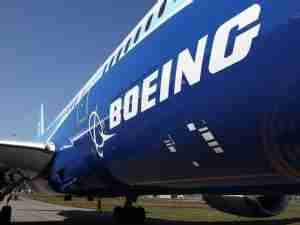That is because he is a horse - one of the many millions of live animals whose transport by air has helped operators cushion the ups and downs of the air cargo sector in the past few years with lucrative specialty freight business.
"It's stayed relatively constant throughout the crisis. There's hardly any volatility like with usual freight. People just love animals," Axel Heitmann, head of Lufthansa Cargo's Animal Lounge in Frankfurt, told Reuters.
And like other kinds of speciality freight - such as pharmaceuticals that have to stay cold, perishables like flowers or valuables like gold - animal cargo is more profitable than general freight.
Larger animals in particular - such as dolphins bound for a water park in Dubai, giant pandas on their way to a new home in Paris or thoroughbred race horses - offer carriers hefty margins.
Lufthansa Cargo, the freight arm of Germany's leading airline Deutsche Lufthansa transports around 100 million live animals per year, almost as many as the number of passengers served by parent Lufthansa.
That number does however include 3,000 tons of worms to be used as fishing bait and a lot of tropical fish, Heitmann said.
Absolutely Profitable
At around 30 million euros ($39.4 million) in annual sales, Lufthansa Cargo's live animal business is still small, compared to its overall sales of 1.4 billion. But it's "absolutely a profitable business," Heitmann said.
Lufthansa invested at least 10 million euros in a new 4,000 square metre animal facility, the Animal Lounge opened in 2008, when its old facilities reached capacity and it was having to turn down business.
Lufthansa Cargo expects its animal business to grow revenues by about 3-4 percent this year, Heitmann said. That compares with a fall of 9.2 percent in volumes for Lufthansa Cargo's overall business in the first six months of the year.
Animals have been transported by air since the early 1930s.
In Germany, the demand for moving pets via planes was driven in the early days by army personnel, who wanted to take their dachshunds back with them to the United States.
Nowadays few airlines transport live animals because there are very strict regulations on the facilities they need to offer and how animals should be treated to keep them safe and well.
Giraffes Risk Heary Attacks, Rhinos Need Sedation
Zoo animals are often especially challenging because they may be especially large, fragile or poisonous. Rhinoceroses, unsurprisingly, have to be sedated throughout the flight.
"You don't want such a large animal lumbering about in flight," Lufthansa's Heitmann said.
And giraffes are so sensitive and at such risk of heart attacks that they have to gradually get used to rising noise levels on the plane before taking off.
But the dangers of transporting animals are worth it for those cargo carriers that are willing to make the investment.
KLM Cargo, part of Air France-KLM, which ships animals ranging "from bumblebees to giraffes and from guppies to horses", says it has seen no declines in demand for animal cargo in the crisis.
Industry-wide, demand for overall air freight meanwhile declined by 2.8 percent in the seven months through July this year, according to airline industry body IATA.
Horses like the 12-year-old stallion Milano de Flore, who placed 64th at the London Olympics, are a particular growth area for cargo carriers. This is due to the popularity of events such as the Spruce Meadows show-jumping in Canada and relatively new tournaments, including the Dubai World Cup.
Data from the Federation Equestre Internationale, the international body governing equestrian sport, shows a marked rise in events over the last four years. Since 2008, the start of the financial crisis, the number of annual events has jumped 34 percent.
"Given the growing popularity of equestrian sport











